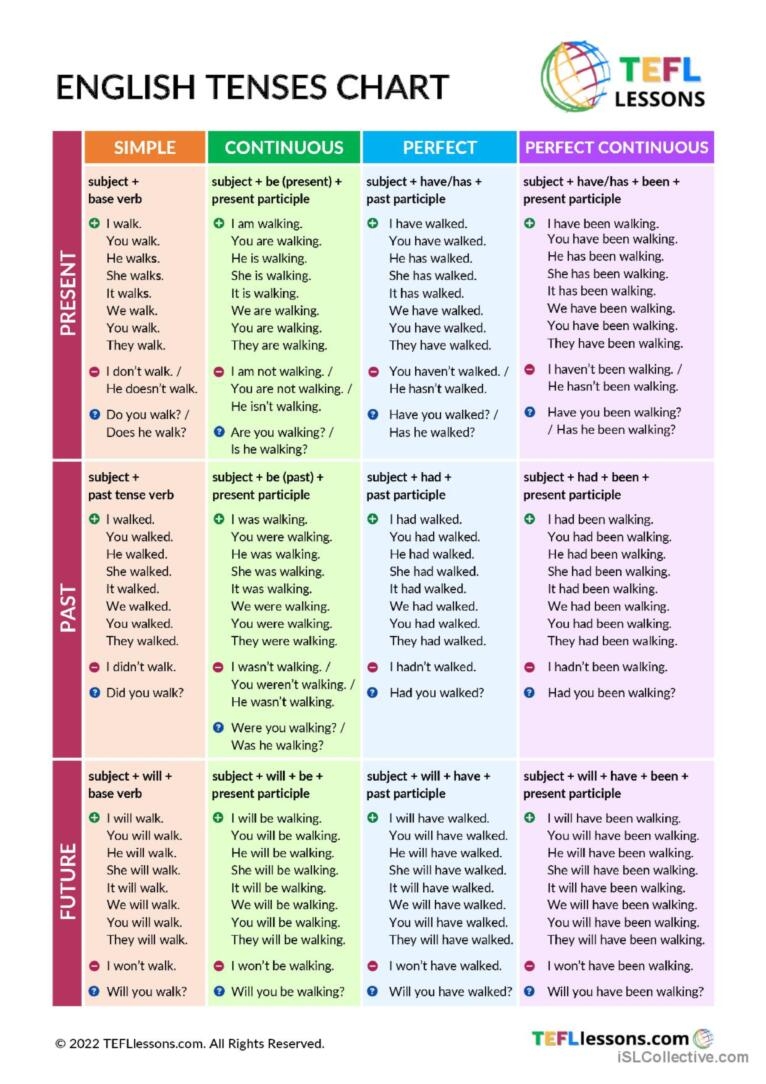English verb tenses can be quite confusing for learners, as there are many different tenses to keep track of. Having a comprehensive chart that outlines all the verb tenses can be extremely helpful in understanding when and how to use each tense correctly.
Whether you are a beginner or an advanced English speaker, having a verb tense chart can serve as a quick reference guide to ensure that you are using the correct tenses in your writing and speaking.
English Full Verb Tense Chart
Present Simple Tense: I eat, I work, I play
Present Continuous Tense: I am eating, I am working, I am playing
Present Perfect Tense: I have eaten, I have worked, I have played
Present Perfect Continuous Tense: I have been eating, I have been working, I have been playing
Past Simple Tense: I ate, I worked, I played
Past Continuous Tense: I was eating, I was working, I was playing
Past Perfect Tense: I had eaten, I had worked, I had played
Past Perfect Continuous Tense: I had been eating, I had been working, I had been playing
Future Simple Tense: I will eat, I will work, I will play
Future Continuous Tense: I will be eating, I will be working, I will be playing
Future Perfect Tense: I will have eaten, I will have worked, I will have played
Future Perfect Continuous Tense: I will have been eating, I will have been working, I will have been playing
Having a solid understanding of these verb tenses can greatly improve your communication skills in English. Remember to pay attention to the time frame, subject-verb agreement, and the context in which each tense is used.
Practice using these tenses in different sentences and scenarios to become more comfortable with their usage. The more you practice, the more natural it will become to use the correct tenses in your conversations and writing.
Refer back to this chart whenever you are unsure about which tense to use, and soon enough, you will become a master of English verb tenses. Keep learning and improving your language skills, and you will see great progress in no time!
